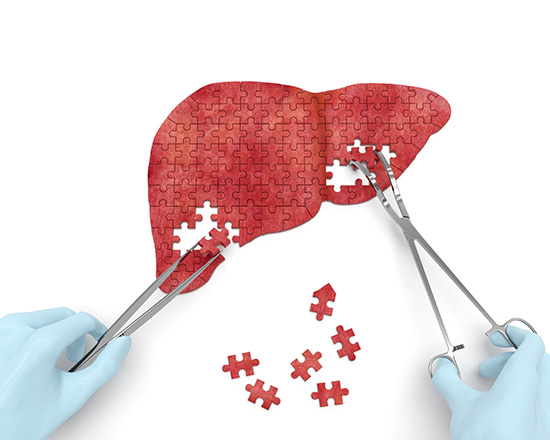Nonalcoholic steatohepatitis (NASH) is fat in the liver, with inflammation and damage. This “silent killer” is one of the leading drivers of liver failure and liver transplantation. The Medical Literature estimates that as many as 10% of American adults have some stage of the disease. Yet, as of today, the condition is still poorly understood, and physicians can offer no direct treatment that can stop or stall NASH’s deadly progress. Recognizing a tremendous unmet need, several large and small biotech companies are competing to deliver solutions. After decades of no progress at all, many biotech analysts believe that America’s Pharmaceutical Industry is close to delivering breakthrough therapies to treat NASH. The prize? Nothing less than many billions in profit for savvy investors. Here is a list of some of the most important biotech players in the race to treat NASH.
Intercept Pharmaceuticals ($ICPT)
Of all the players in this game, Intercept may be the nearest to generating real revenue from it’s research. Just in February of 2019, the company announced positive phase 3 results for it’s novel agent obeticholic acid (known as “OCA.”). This is first research team to have ever shown positive results in stopping and reversing fibrosis of the liver, one of the most deadly elements of the NASH disease process. The company will be presenting the full data to the scientific community over the coming months, and plans to file for FDA marketing approval this coming summer.
Although Intercept is clearly winning the first battles, there is no guarantee that $ICPT will win the war. In the data presented to the public, OCA only worked in about 25% of the patients. This was a big improvement over placebo, but that means $ICPT doesn’t yet have an answer for 75% of all NASH patients.
That means ample opportunity for competition in the NASH space…
Madrigal Pharmaceuticals ($MDGL):
In November of 2018, Madrigal announced some very promising phase II data related to it’s experimental agent, MGL-3196. In this small, relatively short study, MGL-3196 produced dramatically strong results in around 50% of the patients that took the drugs. In addition to liver fat reduction and improvements in liver fibrosis (two key hallmarks of NASH), many patients saw dramatic improvements in their overall cholesterol profiles. Based on this very strong data, $MDGL has just announced that it will be moving forward with a much larger, much more in depth, phase III study. The results of this pivotal phase III trial should be announced sometime in 2020.
Viking Pharmaceuticals ($VKTX)
Nipping at the heels of Madrigal and Intercept is Viking Pharmaceuticals. Viking has just announced successful results from a recent phase II trial. According to press releases, the company’s own entry into the race, VK2809, also showed dramatic reductions in both- NASH progression and overall cholesterol problems. As of the publication of this post, more detailed information was not yet available. The company is set to deliver it’s phase II data to the public over the next few months; a large phase III study can’t be too far behind.
Genfit, SA ($GNFTF)
Genfit is a French company that has been grinding away at curing liver disease since 1999. Genfit has an agent, Elafibranor, heading into phase III trials that has demonstrated very similar benefits to the other experimental medicines on the scene. However, Genfit claims that the company’s distinguishing characteristic is a more complete approach to NASH. In addition to Elafibranor, which aims to treat the “fatty” in fatty liver disease, Genfit also boats experimental treatments to treat liver fibrosis. The company is even working with Labcorp to launch a new way of diagnosing NASH.
Gilead Sciences, Inc. ($GILD)
While all of the above listed companies offer compelling NASH pipelines, it’s more than likely that they will never become household names. This is because big, hungry, mega pharmaceutical beasts like Gilead will probably consume some, or all, of these smaller companies.
While Gilead is likely to face competition in NASH from other Big Pharma giants, Gilead is the most likely to emerge with a gold plated NASH program. There are several critical reasons for this.
First, Gilead has a lot of experience with the human liver. Gilead was the company that cured Hepatitis C; a formerly incurable liver disease. While profits have waned from it’s Hep C franchise, the company retains a powerful infrastructure for accessing physicians that treat the human liver. None of the above mentioned start ups can match Gilead’s army of seasoned sales reps. $GILD would also wield substantial advantages in negotiations with insurance companies and hospitals.
$GILD has boasts an unmatched balance sheet. Despite a recent downturn in business, the company still generated $8 Billion in free cash flow in 2018. New Gilead CEO Daniel O’Day has about $30 Billion in cash laying around to invest in promising Mergers and Acquisitions. This means that $GILD could easily purchase all four of the above listed companies without breaking a sweat.
Gilead has taken a beating in the press of late because it’s own internally developed NASH candidate, Selonsertib, is looking more and more like a failure. But don’t count on O’Day and company giving up on NASH. The multi-billion dollar bonanza potential is just too juicy. Instead, look for Gilead to leverage it’s massive bank account, impressive infrastructure, and long clinical experience to elbow it’s way to the front of the NASH line….
Don’t think that any one of these companies will miraculously “cure” Nash. Most of the competitors in the race are demonstrating between 20% and 50% efficacy. In fact, most evidence indicates that until we have fully understood the metabolic interplay between lipids, obesity, and genetics we will only be able to slow down NASH’s progress and lessen organ damage. This dynamic means constant competition to improve treatments for patients, and constant new profit potential as biotech companies jockey to bring new and improved medicines to the market. Patients will benefit, and investors will benefit. How does that sound for a big, fat opportunity?
DISCLOSURE: The Sick Economist owns shares in $GILD









1 thought on “TREATING NASH: THE RACE FOR THE NEXT BIOTECH BILLIONAIRE BABY”
Comments are closed.